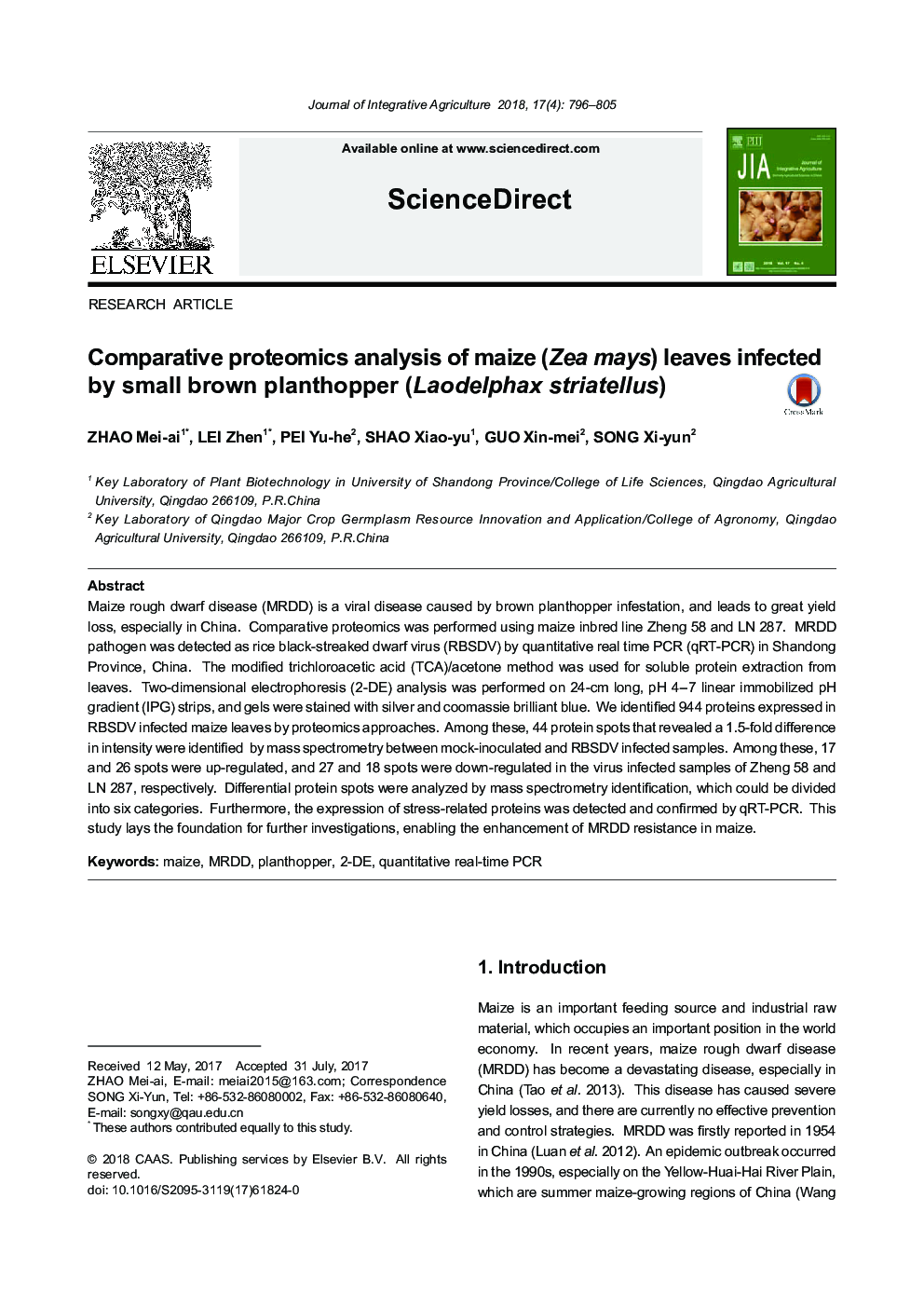| Article ID | Journal | Published Year | Pages | File Type |
|---|---|---|---|---|
| 8875633 | Journal of Integrative Agriculture | 2018 | 10 Pages |
Abstract
Maize rough dwarf disease (MRDD) is a viral disease caused by brown planthopper infestation, and leads to great yield loss, especially in China. Comparative proteomics was performed using maize inbred line Zheng 58 and LN 287. MRDD pathogen was detected as rice black-streaked dwarf virus (RBSDV) by quantitative real time PCR (qRT-PCR) in Shandong Province, China. The modified trichloroacetic acid (TCA)/acetone method was used for soluble protein extraction from leaves. Two-dimensional electrophoresis (2-DE) analysis was performed on 24-cm long, pH 4-7 linear immobilized pH gradient (IPG) strips, and gels were stained with silver and coomassie brilliant blue. We identified 944 proteins expressed in RBSDV infected maize leaves by proteomics approaches. Among these, 44 protein spots that revealed a 1.5-fold difference in intensity were identified by mass spectrometry between mock-inoculated and RBSDV infected samples. Among these, 17 and 26 spots were up-regulated, and 27 and 18 spots were down-regulated in the virus infected samples of Zheng 58 and LN 287, respectively. Differential protein spots were analyzed by mass spectrometry identification, which could be divided into six categories. Furthermore, the expression of stress-related proteins was detected and confirmed by qRT-PCR. This study lays the foundation for further investigations, enabling the enhancement of MRDD resistance in maize.
Related Topics
Life Sciences
Agricultural and Biological Sciences
Agricultural and Biological Sciences (General)
Authors
Mei-ai ZHAO, Zhen LEI, Yu-he PEI, Xiao-yu SHAO, Xin-mei GUO, Xi-yun SONG,
